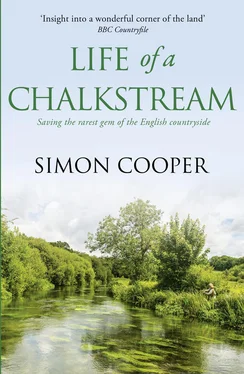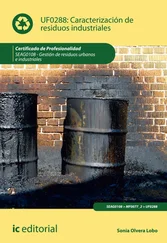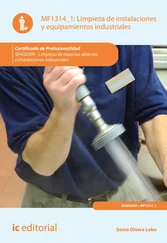The trout I hoped would gather on the gravel beds in North Stream would be fast developers to do so at three years; four is more common and it is the females who first seek out the ideal patch to set up the nursery. It is true that fish often head upstream to spawn to seek out the purest water and best laying gravel, but unlike say Pacific salmon that congregate in the uppermost point of a river in a giant, swirling pink mass, brown trout are smarter than that. Quite frankly they travel only as far as they need to travel, be it a metre or a mile, which is why I had high hopes for our newly restored stream. Brown trout are eminently practical when it comes to spawning; if they have to travel 20 miles upstream to find the perfect place and mate they will do it, but if both are within a few yards, why bother? I was hoping North Stream would be that place, the breeding ground for the trout that inhabited Gavelwood already. The main river was fine, but the stream would be better with more places for redds and a better nursery for the eggs once hatched. From my point of view, it was all about making it easy for the female, because creating a redd is tough work. She positions herself over the chosen spot and then with flicks of the tail or a sideways movement of the body gradually dislodges a few pieces of gravel at a time. With thousands of movements, executed thousands of times over a period of days, gradually an indentation is cut in the gravel of the riverbed. Some of the stones get carried away on the current, but others gradually pile up in a mound at the downstream end of the cut. This mound, seemingly an unimportant by-product of the excavation, will in fact be vitally important when the females come to lay their eggs. But for now our female has to seek out the right location for her redd. The main river is just too fast in most places, as no sooner will she start to dig a hole than the rapid flow will scour it flat again, and even if she succeeded, when it comes to mating the eggs would be whipped away in the current before fertilization had had a chance to take place. So in the search for the ideal spot I am hoping that the trout moving upstream will turn right into the relative calm of North Stream to check it out.
Every action in a river causes some sort of reaction, so digging up the riverbed, however well intentioned, causes all sorts of commotion for other river creatures, and in this particular case the tiny ones. The gravel riverbed is home to millions of invertebrates, animals like snails, bloodworms, nymphs and shrimps, which thrive in the constant temperature of the chalkstream water. While 10ºC might be a very cold bath for humans, for this group it is perfect. And if they thrive, so do the creatures that eat them, namely the fish. Fish are opportunists. Unlike people they don’t have a routine that tells them it will be lunch at such and such a time. If food comes along they eat it and the moment that the redd cutting begins I will see the yearlings – fish under twelve months old – gathering below the cutting area to start hoovering up the unfortunate invertebrates, who can only drift helpless on the current until they either get caught in some weed, float down to the bottom or get swallowed. It must also be said that the yearlings, or parr, are not just there for the food; as eager adolescents they are standing by to add their bit to the spawning process. These ‘sneakers’ as they are called will slip between the adults at the crucial moment. Whether they contribute much in a normal year is debatable, but nature brings them to sexual maturity early as a back-up plan. In a bad year, maybe caused by low water or some other natural disaster that prevents enough males making it to the redds, there will at least be someone there to complete the job.
Fish are not beyond digging into the gravel themselves to find food. Watch a grayling in a river and you will see him go tail up, push his snout down into the gravel and with a puff of silt around his head suck up a shrimp. But why go to all that effort when a redd-making trout does the work for you? This is a winter feast that will only be bettered by the trout eggs themselves. And in the hot summer days, when anglers start to feel the heat and the fish get lazy, there are opportunities for both to capitalize on the dislodged food sites. At four or five spots across Gavelwood water meadows I have places where the cattle can either wade across the river or get into it to drink. As your average bovine drinks around seven gallons a day, maybe twice as much in hot weather, that is a lot of getting in and out of the river. And every time they do it stirs up the riverbed, uprooting the inhabitants. Trout get to know this, so they wait downstream, only moving out from the shade when the muddied water gives them notice of food to come. I do the same, and a well-cast shrimp imitation as the clouded water starts to clear will often turn a dead afternoon into a successful one.
The gravel of North Stream was abundant, but the decades of neglect had left it rock-hard, without the winter floods to break up the surface and sweep away the silt that had formed a crust. Within a week of reopening the Stream the worst of the silt and mud had been washed away to reveal plenty of potential spawning grounds, but when I tested them out the reality was depressing. Jabbing a garden fork into random sections of the riverbed I was mostly rewarded with a bruised hand. The tines would barely penetrate more than an inch or two. This was bad news. If I could not break through with a steel fork then the trout would find the same and keep moving on upstream to abandon North Stream. There were two options – do nothing or intervene.
Do nothing is not so bad if you don’t mind waiting for years. Gradually, nature, in the form of exceptionally heavy winter flows, would break up the surface into the loose gravel that a trout might easily dislodge. But I didn’t feel inclined to wait for years, so intervention, in the form of gravel-blasting, was the remedy. Gravel-blasting is not the nuclear solution it might at first sound. You take a high-pressure water pump with a steel probe on the end, stand yourself in the river, press the probe down into the gravel to a depth of about 6 inches and then wait while the water from the pump does the work, washing away the decades of silt that was binding together the gravel stones. When the water starts to run clear, you pull the probe out and push it back into the gravel a foot or so away. For the first ten minutes this is a fun job, but after a while the novelty palls. It is effective, however, and when you stand on the bank to admire your handiwork there is always a certain amount of satisfaction – the riverbed looks like a freshly plumped pillow and the gravel will positively glisten.
While the trout are starting to weigh up the options of North Stream, our salmon pick up the pace as the scent of the home river gets stronger. Past Land’s End they start to hug the coastline, the beaches of Cornwall then Devon almost in sight. Gradually the pack thins out as one by one they peel off for rivers like the Dart, Exe and Camel. For the remainder the chalk cliffs of the Jurassic Coast are the marker that these salmon are heading for the chalkstream rivers of Dorset, Wiltshire and Hampshire. Yet the salmon might be less eager to make the transition from salt water to fresh if they knew that the change signals the end for most of them: nineteen out of every twenty salmon are certain to be dead within a few months. The odds are much worse for the males than females, but they know nothing of this, so the urge to procreate impels them forward.
Why do they die? From the very moment our salmon enters the fresh water he or she stops feeding. And this cessation is absolute. Not a single calorie of nutrition will be consumed until the salmon returns to the sea or more probably dies. During the time of its life when food is most needed there is none. Day after day the fish swims upstream against the current, navigating weirs, dams and obstacles whilst the body adapts to the change from salt to fresh water, losing weight and condition. In the confines of the river a new raft of predators awaits; otters, pike, herons, cormorants and even fishermen line up for a piece of the action. These are not good odds, and at the head of the river the body-sapping ritual of mating will deliver the death blow to nearly all who make it that far. At Gavelwood we are about 35 miles up from the coast, more or less two-thirds of the way up the river system. For a salmon, a chalkstream like our Evitt is an easy run: no massive waterfalls to leap over or fierce currents to swim against. The greatest point of difficulty is Middle Mill, 5 miles up from the sea. At one time this was the biggest flour-grinding mill in the county, capturing the entire river flow to drive two enormous waterwheels. Below the mill races is the mill pool, a huge expanse of swirling water, which is the first place the salmon rest up on their run inland.
Читать дальше












